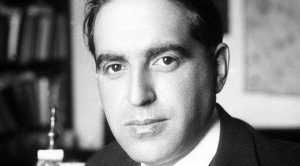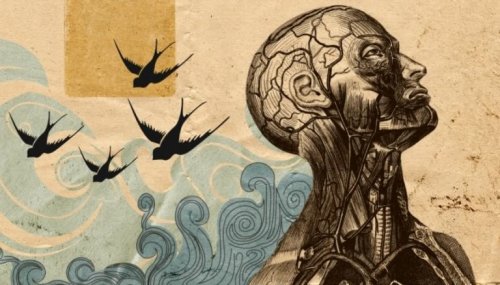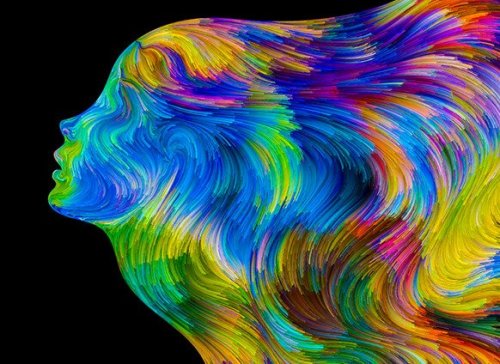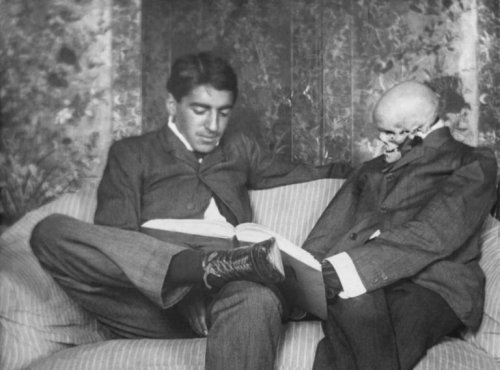Gregorio Marañón and His Theory of Personality

Gregorio Marañón was one of the most important Spanish intellectuals of the 20th century. Although he was a doctor, he ventured into multiple fields of culture and thought.
As a doctor, he specialized in endocrinology. He was, undoubtedly, an expert in this field. In fact, he was so good at it that people recognized his work internationally. It was due to this training that Gregorio Marañón postulated a theory of personality that, although it isn’t very well known, is incredibly interesting.
According to Gregorio Marañón, the endocrine gland determines both an individual’s temperament and personality. Although this theory eventually became obsolete, it clearly provided valuable elements for the development of the incredible science we now know as psychology.
Some Facts about Gregorio Marañón
Gregorio Marañón was born in Madrid, Spain, in 1887. He became a doctor in 1910 and devoted himself to endocrinology with great passion. He was one of the pioneers of this specialty in Spain and the rest of the world.
Marañón published several pieces of work on endocrinology, which helped him rise to fame. In various articles and speeches, he spoke about his ethical way of thinking and his vision of Spain. Because of his peculiar train of thought, he also became a reference point for humanism and all studies related to it. Likewise, he made valuable contributions in the area of gerontology.
He met Sigmund Freud personally and, although he validated some concepts of psychoanalysis, he didn’t take part in it. He was also a determined political activist. The particular combination between a rigorously scientific and radically humanistic spirit characterized his personality. He died in 1960.

Male Typology
Gregorio Marañón designed a complex theory of personality based on the influence of the endocrine system. According to him, due to the fact that hormones are closely related to the nervous system, they’re able to determine temperament and personality. In his opinion, they exert great influence on psychic rhythm, affectivity, and neuromuscular excitability.
From these considerations, Marañón created a typology of men and women. These manifest in their physical appearance and each of them is proper of a specific type of personality.
According to Marañón, there are some types of constitutions among men, which can be called “normal”:
- Hypoplastic. Characterized by a small and infantile constitution.
- Asthenic. Flat and narrow chest, graceful skeleton, narrow shoulders, and flaccid musculature.
Picnic. The opposite of asthenic.
Now, the following are the abnormal constitutions:
- Gigantoid. Those of enormous size.
- Enanoid. Those of a particularly small size.
- Eunocoid. Of poor genital development and secondary sexual characteristics.
- Hypergenital. Opposed to eunocoid.

Female Typology
For Gregorio Marañón, men have a stable constitution. Women, on the other hand, have a fluctuating constitution. He identified three types of women:
- Type I or Infantile. Childish features, low eroticism, fragility, and suggestibility.
- Type II or Asthenic. Medium sized, late eroticism, great maternal instinct, regular, sensitive, emotional, and narcissistic.
- Type III or Picnic. Large and robust women, with more or less masculine features, energetic libido, determined, and independent.
As you can see, Marañón conditions a woman’s sexual life to her biological constitution. This approach became very controversial. People particularly questioned the fact that he suggested female anorgasmia as a physiological feature.

The Evolution of these Constitutions
According to Gregorio Marañón, biological constitution evolved through time. This caused temperament to undergo certain modifications. Such development went from the hypoplastic to the asthenic, and from the asthenic to the picnic. He called this the happiness curve. For him, the typical male was a Picnic. It was usual for women not to ‘evolve’ up to that point since it refers to an intermediate point between a boy and a man.
He also stated that when the traits of each type were very marked, no major changes occurred throughout life. However, every single person evolves.
On the other hand, Gregorio Marañón argued that both men and women go through a critical age throughout their development. For boys, it’s puberty, while for women it’s the climacteric.
Marañón’s approaches are interesting, no doubt about it. However, they were debunked and, as of today, they’re hardly an academic reference.
Gregorio Marañón was one of the most important Spanish intellectuals of the 20th century. Although he was a doctor, he ventured into multiple fields of culture and thought.
As a doctor, he specialized in endocrinology. He was, undoubtedly, an expert in this field. In fact, he was so good at it that people recognized his work internationally. It was due to this training that Gregorio Marañón postulated a theory of personality that, although it isn’t very well known, is incredibly interesting.
According to Gregorio Marañón, the endocrine gland determines both an individual’s temperament and personality. Although this theory eventually became obsolete, it clearly provided valuable elements for the development of the incredible science we now know as psychology.
Some Facts about Gregorio Marañón
Gregorio Marañón was born in Madrid, Spain, in 1887. He became a doctor in 1910 and devoted himself to endocrinology with great passion. He was one of the pioneers of this specialty in Spain and the rest of the world.
Marañón published several pieces of work on endocrinology, which helped him rise to fame. In various articles and speeches, he spoke about his ethical way of thinking and his vision of Spain. Because of his peculiar train of thought, he also became a reference point for humanism and all studies related to it. Likewise, he made valuable contributions in the area of gerontology.
He met Sigmund Freud personally and, although he validated some concepts of psychoanalysis, he didn’t take part in it. He was also a determined political activist. The particular combination between a rigorously scientific and radically humanistic spirit characterized his personality. He died in 1960.

Male Typology
Gregorio Marañón designed a complex theory of personality based on the influence of the endocrine system. According to him, due to the fact that hormones are closely related to the nervous system, they’re able to determine temperament and personality. In his opinion, they exert great influence on psychic rhythm, affectivity, and neuromuscular excitability.
From these considerations, Marañón created a typology of men and women. These manifest in their physical appearance and each of them is proper of a specific type of personality.
According to Marañón, there are some types of constitutions among men, which can be called “normal”:
- Hypoplastic. Characterized by a small and infantile constitution.
- Asthenic. Flat and narrow chest, graceful skeleton, narrow shoulders, and flaccid musculature.
Picnic. The opposite of asthenic.
Now, the following are the abnormal constitutions:
- Gigantoid. Those of enormous size.
- Enanoid. Those of a particularly small size.
- Eunocoid. Of poor genital development and secondary sexual characteristics.
- Hypergenital. Opposed to eunocoid.

Female Typology
For Gregorio Marañón, men have a stable constitution. Women, on the other hand, have a fluctuating constitution. He identified three types of women:
- Type I or Infantile. Childish features, low eroticism, fragility, and suggestibility.
- Type II or Asthenic. Medium sized, late eroticism, great maternal instinct, regular, sensitive, emotional, and narcissistic.
- Type III or Picnic. Large and robust women, with more or less masculine features, energetic libido, determined, and independent.
As you can see, Marañón conditions a woman’s sexual life to her biological constitution. This approach became very controversial. People particularly questioned the fact that he suggested female anorgasmia as a physiological feature.

The Evolution of these Constitutions
According to Gregorio Marañón, biological constitution evolved through time. This caused temperament to undergo certain modifications. Such development went from the hypoplastic to the asthenic, and from the asthenic to the picnic. He called this the happiness curve. For him, the typical male was a Picnic. It was usual for women not to ‘evolve’ up to that point since it refers to an intermediate point between a boy and a man.
He also stated that when the traits of each type were very marked, no major changes occurred throughout life. However, every single person evolves.
On the other hand, Gregorio Marañón argued that both men and women go through a critical age throughout their development. For boys, it’s puberty, while for women it’s the climacteric.
Marañón’s approaches are interesting, no doubt about it. However, they were debunked and, as of today, they’re hardly an academic reference.
This text is provided for informational purposes only and does not replace consultation with a professional. If in doubt, consult your specialist.







